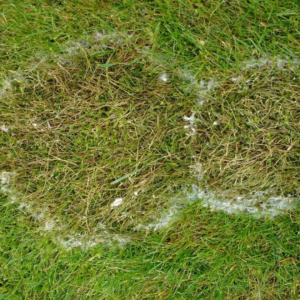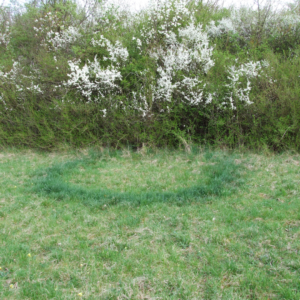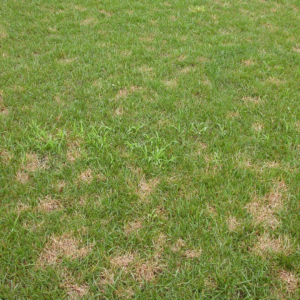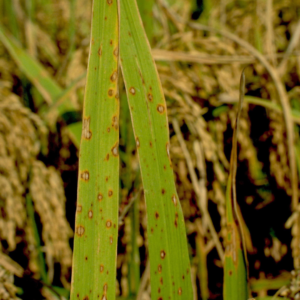When it comes to identifying lawn diseases, it can be a bit of a challenge. Often they just look like unsightly brown patches or die off. But our handy lawn disease identification chart for Australian lawn diseases can definitely help.
Common Lawn Diseases
Lawn Disease Identification Chart Australia
Lawn Disease |
Image |
Symptoms |
Treatment |
Take-All Patch |
 |
Initially Take-All Patch lawn disease looks like small, light-brown dead patches in the turf. But over time this can spread to over one metre wide.
You can recognise Take-All Patch because the base of the shoots and roots become brownish black before they die. |
|
Spring Dead Spot |
 |
Spring Dead Spot lawn disease is typically found often in late winter and spring. It presents as circular, bleached patches which can range from a few centimetres to over one metre in size. |
|
Pythium Blight |
 |
First appearing as small, irregularly shaped water-soaked spots that range from 10 to 100mm in diameter. Pythium Blight lawn disease then appears as slimy or oily patches which then shrivel. Patches fade to light-brown or grey colour and grow to join together. They may even look like long streaks of affected turf.
It’s most easily identified by the white, cottony fungal mycelia that you can see on the surface of the leaves in the morning. |
|
Fusarium Patch |
 |
Initially identifiable by small, round, water-soaked patches less than 5cm in diameter. These range in colour from orange to dark brown to light grey, and usually grow to about 20cm.
Identifiable by the halo-like ring that can appear on the outer edges of infected areas on low-cut turf. Also by the thin covering of white mycelium that turns a pink colour in sunlight. |
|
Fairy Ring |
 |
Fairy Ring lawn disease isn’t as nice as it initially sounds. It appears as circular or arc-shaped rings of faster growing turf.
It’s easily identifiable by the concentric ring of dead grass that develops inside the circle of fast growing turf. Often accompanied by mushrooms or toadstools. |
|
Dollar Spot |
 |
Like many other lawn diseases Dollar Spot can first appear as small, circular discoloured patches in the lawn. They differ from other lawn diseases by also being slightly sunken.
Often mistaken for drought injury or fertiliser burn, Dollar Spot is identifiable by the bleached lesions that run down the blades of the grass. And when dew is on the grass, cottony threads will appear as well. |
|
Helminthosporium Leaf Spot |
 |
Of all the lawn diseases this one is the most uniquely identifiable by the small lesions on the leaf blades which causes the leaf to turn yellow. Once they are severely impacted, they die back and take on a straw-like structure.
On some lawn types – for example couch – white or black blotching can appear. And the lesions can look purple-black in colour. On kikuyu the lesions look solid brown to purple coloured as well. |
|
Identifying common lawn diseases is one step in making sure your grass is green and lush all year round. But we have loads of other tips to make your neighbours green with envy. From how often to water to the best tips for mowing.









